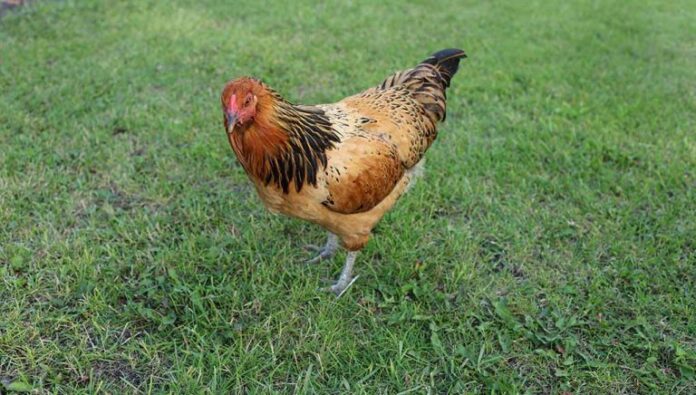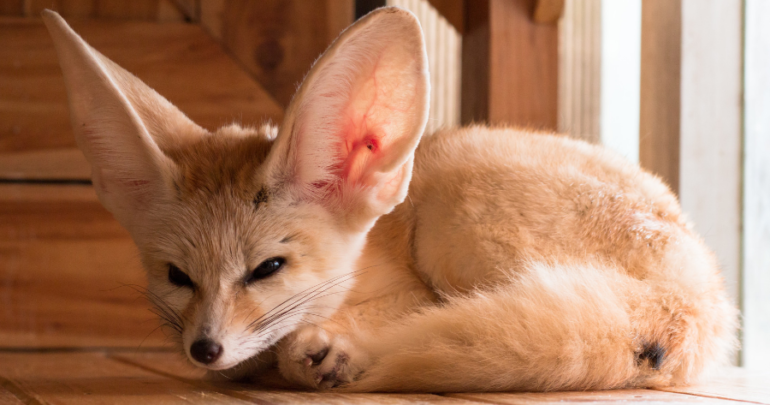Last Updated on May 5, 2022 by Fumipets
The Easter Egger has become a garden favorite across America, despite the fact that it is not entirely purebred. What’s not to admire about its adorable appearance and bright personality?
They’re called Easter Eggers because they can lay a wide range of egg colours and have a diversity of plumage colours.
In the United States, an Easter Egger is a bird thought to contain the blue egg-laying gene from its parent breed (the Araucana or Ameraucana).
Despite their reputation as an egg layer, they are a good dual-purpose breed.
This page will teach you everything you need to know about them, including their disposition, ability to produce eggs, and much more…

Overview
| Easter Egger Chicken | |
|---|---|
| Beginner Friendly: | Yes. |
| Lifespan: | 5-8 years. |
| Weight: | Hens (4lb) Roosters (5lb). |
| Color: | Variable. |
| Egg Production: | 4 per week. |
| Egg Color: | Typically blue. |
| Known For Broodiness: | No. |
| Good With Children: | Yes. |
| Cost of Chicken: | $4 per chick. |
History and Background of Easter Eggers
People began crossing Araucanas or Ameraucanas with various breeds to make these adorable “mutts.”
These cross-breedings resulted in multi-coloured eggs and a cute-looking bird!
Both the Araucana and the Ameraucana contain the gene for laying blue eggs. A green/olive-coloured egg is generated when a brown-egg-laying breed is crossed with an Araucana or Ameraucana.
Easter Eggers have been around for a long time and haven’t lost any of their popularity; in fact, due to their colourful eggs and low-maintenance lifestyle, they’re becoming even more popular among backyard chicken keepers.
Get to Know the Parents
We have no way of knowing who their parents are exactly. However, it is usually assumed that Araucana and Ameraucana are the parents.
They have pea combs and ear tufts. The ear tuft gene has the potential to be fatal to embryos. If both parents have it, the majority of the chicks will die in the shell, which is why they are so rare. They’re a cross between Collonca and Quetros chickens from the area where they were first discovered, and they have the dominant blue egg gene.
Ameraucana
Mixed-breed chickens and Araucanas were used to create the Ameraucana. They were designed according to the breeders’ preferences, and a standard was established.
Araucana
The first Araucanas arrived in the United States in the 1930s from Chile, South America. They’re rumpless, which implies they don’t have a tail or a coccyx.
They have ear ‘tufts’ and a pea comb. The ear tuft gene can be lethal to the embryos. If both parent birds have it, most of the chicks will die in the shell, hence their rarity. They are actually a mix of Collonca and Quetros chickens from the area where they were first found and carry the dominant blue gene for eggs.
Appearance
The Easter Egger can have a wide range of characteristics. They can have any comb, but the most frequent are single and pea (depends on their parents).
Ear lobes can be any colour but are most commonly red or white, and some birds have ear tufts. Both sexes have red wattles that are tiny.
Their facial features can include all, some, or no muffs and/or beards, giving them a chipmunk-like appearance.
They normally have a tail, however, some birds may be rumpless due to Araucana genes.
The shanks can be any colour, from yellow to slate blue/green, and the legs are usually clean. The foot has four toes and, like the shanks, the footpad can be any colour.
It’s impossible to give an Easter Egger a “genuine” colouring. Their feathers come in a variety of colours, designs, and splashes. It depends on the parent birds’ plumage and which of those colours becomes dominant genetically.
They’re little for a chicken, with the male weighing around 5 pounds and the female at 4 pounds.

Standard
There is no defined standard for the Easter Egger because it is a hybrid.
Why Do Easter Eggers Lay Blue Eggs?
Scientists didn’t figure out why certain chickens lay blue eggs until 2013 when the chicken genome was mapped out.
Certain breeds (Araucana, Dongxiang, and Lushi) were found to be contaminated with a retrovirus that had incorporated itself into the DNA of the chicken.
The oocyan gene is responsible for the egg’s blue colour, and the pigment that colours the egg is generated from oocyanin, a liver pigment.
The main distinction between coloured and blue eggs is that the blue colour runs all the way through the shell, blue on both the interior and outside. When a ‘dye’ called protoporphyrin is placed onto the shell, it results in brown or coloured eggs.
That’s why cleaning a brown egg thoroughly can occasionally remove the pigment!
Disposition
They have a cheerful, outgoing disposition that best describes them. They are pleasant, inquisitive, and gentle. Eggers aren’t bullies, but they can be picked on by more aggressive kinds, so keep an eye on them while they’re with other birds.
They’d work best with non-aggressive, easygoing fish like Salmon Faverolles or Cochins.
Easter Eggers are not shy, and they frequently approach humans in search of treats or lap time. They get along well with children, and the children appreciate them for their charm and colourful eggs.
Egg Laying and Broodiness
They are good layers, laying 4 big eggs each week (about 200 per year).
You should be aware that whichever colour eggs the hen lays will be the only colour she lays – rainbow assortments are not available. However, if you have numerous chickens, your egg box is likely to have a wide range of colours.
Because they rarely go broody, they spend the majority of their time laying those delicious eggs.

Health Issues
They are strong and healthy birds. There are no specific health issues, except from the usual parasite concerns, which are particularly prevalent in birds with beards and muffs.

Coop Setup
Because these chickens are a little on the tiny side, the 4 square foot per chicken rule will suffice.
They’ll be OK with 8-10 inches of roosting area each.
They are, however, on the little side and are not aggressive. So, if they wish to be away from the bullies, make sure there are enough roosts available.
For this breed, a 12 by 12 inch nesting boxes will be suitable. One nesting box should be sufficient for every three birds, though there will always be a favourite box that they all want to use at the same time!
Is The Easter Egger The Right Choice For You?
The Easter Egger is the right choice if you want friendly chickens and colourful eggs. They may not have a pedigree, but they more than make up for it in other ways.
Easter Eggers are adorable birds with distinct personalities and appearances. They aren’t a noisy bird, so they shouldn’t bother your neighbours.
They will bear confinement well enough, despite their preference for free ranging. They are, however, curious and lively, so offer them with things to explore in their pen so they do not become bored.
Allowing them to roam free will supplement their food well, lowering your feed bill considerably!
They can withstand extremes of heat and cold and can live in a variety of conditions as long as they have the basic essentials of life (food, water, and shelter).
Conclusion
Chick season is fast approaching, and among all those fluffy little peeps, you might come across some Americanas.
Easter Eggers, these are most likely mislabeled if they cost less than $5.00 a bird.
True Araucanas or Ameraucanas are rarely if ever, found at feed stores, and they are almost always far more expensive than $5.00.
The excitement of having varied coloured eggs is a massive attraction for many individuals. Not only do you get a variety of colourful eggs, but the chicks can also grow up to appear rather diverse.
These birds are low-maintenance and will lavish you with lovely eggs in return. They are particularly unusual in that, despite not being “pedigrees,” they have established a cult-like following!


















